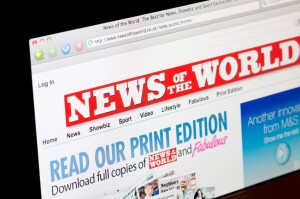Do style and substance mix in official diplomatic circles?
As I have mentioned in an earlier blog post, Richard Holbrooke a unique US foreign policy advisor to many administrations was a rather rare diplomat in combing substance and style in his statecraft.
Holbrooke was a prominent US trouble-shooter in Bosnia, Kosovo and Afghanistan. However he combined this aspect of his professional profile with an outsized personality and a fabulous network worthy of any A-list celebrity from the world of business or entertainment. And of course still going strong is the status Henry Kissinger brings to statecraft and celebrity. Kissinger is arguably the most elevated American celebrity/diplomat since Benjamin Franklin.
What happens however when celebrity style and the diplomatic substance contradict each other?
Kissinger’s celebrity status does not mean that he operated like celebrity diplomats such as Bono, Angelina and George – with media fanfare and the pursuit of public goods and global governance. On the contrary he mixed a desire for media attention with a sensitivity to the requirements of statecraft – seeking publicity for his societal flair but strenuously avoiding it when undertaking secret diplomatic shuttle diplomacy in the national interest. His major work whether judged for good or for ill was conducted far from any journalistic or public scrutiny.
Although far less experienced than Kissinger we may be seeing a similar cultured gap between celebrity style and diplomatic substance in the forays of Pakistan’s new foreign minister. Hina Rabbani Khar recently made a stylistic splash on the diplomatic stage– using her uniqueness (a young female diplomat markedly different from the old boys club’s standard diplomatic image).
One interpretation is that style is substance, with the choice of such a different choice of foreign minister representing an authentic effort in re-branding, especially with regard to relations with India to which Hina Rabbani Khar gained far more positive attention in her first official visit at the end of July. Another interpretation comes from Foreign Policy however. This interpretation suggests that the real salience of the appointment of Pakistan’s first female foreign minister is a cover-up of substance with style. How blurred this picture becomes is reinforced by Hina Rabbani Khar’s meeting with Hurriyat/Kashmiri separatist leaders in the Pakistan High Commission during her visit to New Delhi.
For those who interpreted her activities as a distinct break from the past, this meeting was constructive and totally transparent to the Indian media. For those with a more negative impression, though, the meeting revealed that Hina Rabbani Khar’s appointment represented the same old reality –with a glamorous face subordinated to a dangerous state apparatus.


